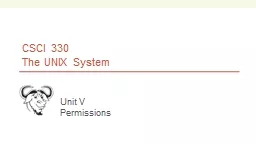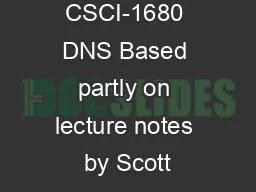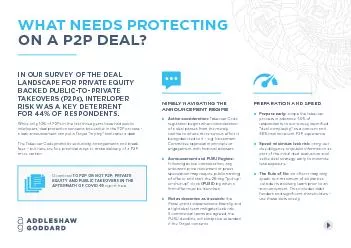PPT-CSCI-1680 P2P Based partly on lecture notes by
Author : discoverfe | Published Date : 2020-10-01
Ion Stoica Scott Shenker Joe Hellerstein Rodrigo Fonseca Today Overlay networks and PeertoPeer Motivation Suppose you want to write a routing protocol to replace
Presentation Embed Code
Download Presentation
Download Presentation The PPT/PDF document "CSCI-1680 P2P Based partly on lecture no..." is the property of its rightful owner. Permission is granted to download and print the materials on this website for personal, non-commercial use only, and to display it on your personal computer provided you do not modify the materials and that you retain all copyright notices contained in the materials. By downloading content from our website, you accept the terms of this agreement.
CSCI-1680 P2P Based partly on lecture notes by: Transcript
Download Rules Of Document
"CSCI-1680 P2P Based partly on lecture notes by"The content belongs to its owner. You may download and print it for personal use, without modification, and keep all copyright notices. By downloading, you agree to these terms.
Related Documents














